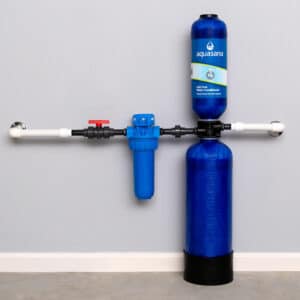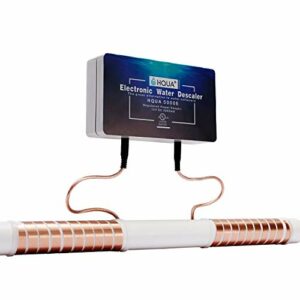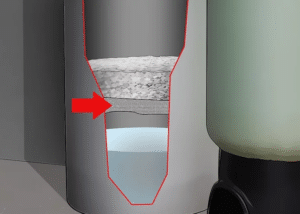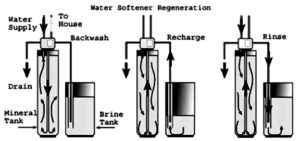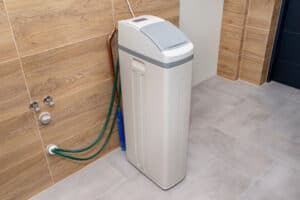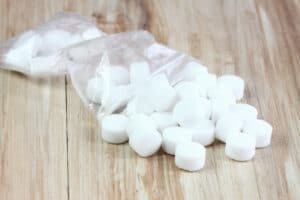There are many benefits to using a water softener in your home or office and depending on usage, water softener regeneration can happen more often than you may think.
This article takes a look at the water softener regeneration process and why it happens.
What is Water Softener Regeneration?
Water softener regeneration is the process through which minerals are flushed from the water softener resin to allow for continuous softening of hard water.
The job of a water softener is to flush out the minerals contained within incoming hard water. Elements such as calcium and magnesium will pass through and get attached to the resin within the unit. When the resin volume fills up, it requires a regeneration cycle.
Water softener regeneration is necessary to ensure that the unit can remove the trapped minerals from the resin and continue processing soft water. Also known as recharging, this process will take place either on a specified schedule or when it deems necessary.
Depending on the type of unit you have, there will be a specific volume of salt required for the regeneration process. You do not want to let your water softener get low on salt supplies since damage can occur if it tries to regenerate and there is not enough salt to create the brine.
Related: Salt Free Water Softener Guide
Why Does a Water Softener Regenerate?
A water softener regenerates when the resin volume cannot hold any more hard water minerals. Regeneration or recharging is essential to dispel these items, like calcium and magnesium. This process can be activated several times, depending on your water consumption. If this process does not execute correctly, hard water will continue to run through your pipes and into your appliances. This can cause significant damage over time.
Some water softeners will regenerate once a week, while others may run sooner or later than that. Many units will have a built-in scheduler to run this regeneration as needed, while others could have it set to on-demand. This attribute is an effective way to complete the task as necessary, rather than following a set schedule.
If you have any questions about the current regeneration timing, talk to a professional. These trained individuals can examine your current water consumption and the size of your water softener. These elements, and others, will help them determine if you need any modifications to the scheduled times.
Related: How To Tell If Your Water Softener Is Working
Water Softener Regeneration Process
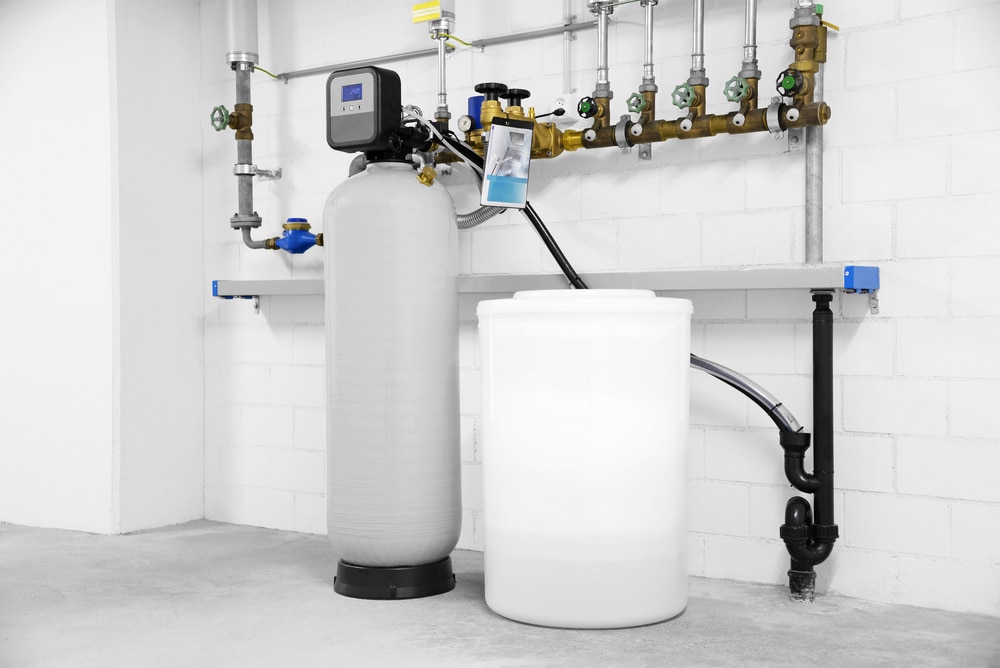
During the regeneration process, the unit will work through five complete stages to effectively prepare your water softener for continuous use. All of these steps help to keep your resin clean and free from build-up as you run water through your home or office regularly.
These regeneration steps include:
- Fill
- Brining
- Brine rinse
- Backwash
- Fast rinse
Each of these steps is crucial for optimal performance and long-term use of your water softener. The water softener regeneration frequency will vary depending on your water consumption and if your unit has an option for an on-demand or set schedule.
Fill
Water will fill the salt storage area and mixes to create the brine. The size of your water softener unit will dictate the time it takes for it to fill up. This process can vary from a few minutes to 20 minutes.
Brining
Here the brine water and salt mixture created during the filling process moves from the salt storage area to its resin tank. The brine is essential for removing the hard mineral elements, such as calcium and magnesium, from the resin beads.
The combination of a venturi setup and the nozzle help create the optimal suction to move the brine through slowly. With this slow rate, the resin will clean effectively and efficiently, using as little salt as possible. The released hard minerals and brine become expelled into the drain.
The entire process of brining can take anywhere from 30 minutes up to 100 minutes in total.
Brine Rinse
The brine valve will close after a pre-set amount works its way through the unit. Once it is closed, water will continue to flow along the same path. This rinse expels any leftover brine or minerals that may still exist in the resin tank to the drain.
Backwash
The backwash step is a hard and fast process. By pushing water back up through the resin tank at a high rate, any accumulated iron, dirt, or other sediments will release to the drain. The entire step can take only 3 to 10 minutes to complete.
Some areas of the world do not utilize the backwash process, like the United Kingdom. The water supply is inherently different than that of the United States, therefore not requiring the use of a backwash step.
Fast Rinse
A fast flow of water down through the resin tank serves two purposes. It will flush out any remaining brine from the bottom of the tank, and it helps to pack in the resin beads. The last step in the water regeneration process can last anywhere from 3 to 10 minutes. The until will resume regular operation once this stage is complete.
If any of these steps are taking longer than regular or your unit seems stuck in regeneration mode, you will need to call a professional for service immediately. Do not continue to run the softener, as there may be damage to internal parts, especially if it remains in a process.
Related: Water Softener Installation Process
How Long Does Water Softener Regeneration Take?
If you are looking for an answer to how long does water softener regeneration take to finish, it can differ from unit to unit. The style and size of the water softener will have an impact on overall regeneration time.
So, how long does water softener regeneration take? On average, the water softener regeneration process can run anywhere from 90 to 120 minutes overall.
If your water softener is running exceptionally longer than this time, you may have a malfunction within the unit. Have a professional examine it for any faults that could be causing it to run a regeneration longer than necessary.
Ensure that you have your water softener serviced each year to maintain peak operation for the life of your unit. It is not unlike any other major appliance that could require regular service to help your product last longer and work more efficiently. Large appliances like water softeners will also have a manufacturer’s warranty, which needs regular maintenance checks to keep it valid.
How Much Water is Discharged From a Water Softener During Regeneration?
When you use a water softener, you may have questions about water consumption. It is natural to be curious about how much water is discharged from a water softener during regeneration. The expelled water will not be used in your home and could increase your utility bills if this process happens quite often. The unit size will help determine how much water makes it to the drain during the regeneration process.
So, what is water softener regeneration usage? Some highly efficient softeners will use between 20 and 25 gallons of water, while others designed for larger homes or office spaces can use between 35 and 65 gallons during the same steps.
The documentation that comes with your unit should tell you exactly how much water it uses during the regeneration process. If you have any concerns or are unable to find this information, talk to a professional who can break down the details for you.
When Should a Water Softener Complete a Regeneration?
Because you should not use water during the regeneration time, you should choose a time where there will not be a demand for water consumption. If you use water while the softener is completing the regeneration, it will allow hard water into your pipes, which could cause damage. It is best to run it when water is not needed to avoid this from happening.
Many residential homes will choose evening hours such as 2:00 am to 4:00 am for their regeneration. Office buildings may stick to this same schedule or complete a cycle throughout the weekends when there is no water usage.
In Conclusion
Water softeners can give your home or office several benefits when you face hard water sources in your area. If you are in a location that draws water from a well or the mineral content is higher than average, a water softener can help.
The water softener regeneration process is part of the regular operation of these units. Because there are various styles and sizes of water softeners, you may find the entire process could be longer or shorter than that of an average product.
Do not be afraid to reach out to a professional if you feel that there are concerns with the water softener regeneration process or the regular operation of your water softener. Having your unit function effectively and efficiently is the best way to see the benefits of using soft water.

